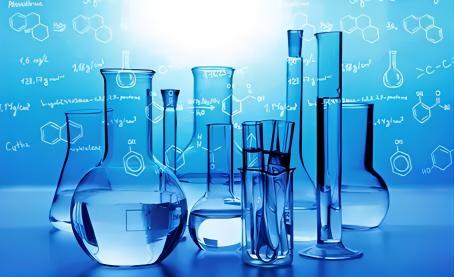In the chemical industry, chemical intermediates are substances that are produced in one reaction step and used as raw materials in subsequent steps to create final products. Unlike final products, intermediates are usually not sold directly to end consumers but are essential in manufacturing processes.
Key Characteristics of Chemical Intermediates:
- 🔹 Temporary Products: They are not the end goal but are necessary to produce other chemicals.
- 🔹 Used in Multi-Step Synthesis: Serve as building blocks in complex chemical production.
- 🔹 Industry-Specific: Widely used in pharmaceuticals, plastics, dyes, agrochemicals, and more.
Types of Chemical Intermediates:
| Type | Application Example |
|---|---|
| Pharmaceutical Intermediates | Antibiotics, analgesics |
| Agrochemical Intermediates | Pesticides, fertilizers |
| Dye Intermediates | Textile dyes, pigments |
| Polymer Intermediates | Plastics, synthetic rubbers |
Why Are Chemical Intermediates Important?
- Enable Large-Scale Production: Intermediates are crucial steps in creating mass-produced chemicals.
- Control Costs: Efficient intermediate production lowers the cost of the final product.
- Allow Specialization: Companies can focus on producing intermediates for global supply chains.
In a chemical reaction, intermediates are species (atoms, molecules, ions, or radicals) that are formed in one step of the reaction and consumed in a subsequent step. They do not appear in the overall balanced equation because they only exist temporarily during the reaction process.
Key Features of Intermediates:
- Short-lived: Intermediates typically exist for a very brief period.
- Not in overall equation: They cancel out when you sum all the reaction steps.
- Essential to mechanism: Intermediates help explain how the reaction proceeds at the molecular level.
Example:
Consider this reaction mechanism:
- A+B→C∗A + B \rightarrow C^*A+B→C∗ (intermediate formation)
- C∗→D+EC^* \rightarrow D + EC∗→D+E (intermediate consumption)
Here, C∗C^*C∗ is the intermediate.
What are the characteristics of a chemical intermediate
1. Temporary Existence
- Chemical intermediates are produced in one step and consumed in the next during a multi-step chemical process.
- They do not remain in the final product.
2. Not Present in Final Equation
- In reaction mechanisms, intermediates cancel out when all steps are combined into the overall balanced equation.
- They are essential in the pathway but invisible in the net reaction.
3. Reactive but Sometimes Isolable
- Many intermediates are highly reactive and short-lived, but some are stable enough to be isolated, purified, or stored temporarily for further use.
4. Essential in Multi-Step Synthesis
- They connect reaction stages in processes like pharmaceutical production, petrochemical refining, and polymer manufacturing.
- Often serve as key building blocks for producing complex molecules.
5. Role in Reaction Mechanism
- Intermediates are crucial for understanding how a chemical reaction proceeds step by step.
- Studying intermediates helps chemists design faster, safer, and more efficient reactions.
6. Industrial Relevance
- Many intermediates are produced on a commercial scale as feedstocks for other products.
- Example industries: Pharmaceuticals, dyes, plastics, agrochemicals.
What Is an Intermediate in Chemical Synthesis?
In chemical synthesis, an intermediate is a chemical compound that is formed during one step of a multi-step reaction and is then used up in a subsequent step to eventually produce the final product.
It is not the starting material or the end product—it is a temporary compound that connects different stages of the reaction pathway.

Key Features of Intermediates in Chemical Synthesis:
- Formed and Consumed Within the Process
Intermediates are created in one reaction step and consumed in the next. They do not appear in the final product’s molecular structure. - Short-Lived or Isolable
Some intermediates are highly reactive and unstable (existing only briefly), while others can be isolated, stored, and even sold if stable enough. - Essential for Complex Molecule Construction
Intermediates enable the stepwise construction of complex molecules, such as drugs, polymers, and agrochemicals. - Industrial Significance
In large-scale manufacturing, intermediates often serve as feedstocks for producing pharmaceuticals, dyes, plastics, and specialty chemicals.
Example: Chemical Synthesis of Paracetamol (Acetaminophen)
- Step 1: Phenol → Nitrobenzene
- Step 2: Nitrobenzene → 4-Aminophenol (Intermediate)
- Step 3: 4-Aminophenol → Paracetamol (Final Product)
👉 4-Aminophenol is the intermediate in this synthesis process.
Why Intermediates Matter:
- ✅ Enable Multi-Step Reactions: Without intermediates, complex chemical synthesis would not be possible.
- ✅ Allow Process Optimization: Studying intermediates helps chemists improve yields, efficiency, and safety.
- ✅ Support Industrial Supply Chains: Many companies specialize in producing intermediates as raw materials for others.
Quick Summary:
| Feature | Description |
|---|---|
| Role | Temporary link in multi-step synthesis |
| Stability | Can be reactive or isolable |
| Appearance | Not present in the final product |
| Industrial Use | Widely used in pharmaceuticals, dyes, etc. |
| Mechanistic Value | Helps explain the pathway of chemical reactions |
Product Recommendation Conclusion
Chemical intermediates are essential raw materials widely used in fine chemicals, pharmaceuticals, agrochemicals, dyes, and polymer industries, offering significant application value. Based on a detailed analysis of their characteristics, the following product recommendations are provided:
- Prioritize High-Purity Intermediates
High-purity chemical intermediates can significantly improve the yield and quality of downstream reactions, reduce impurity formation, and are especially suitable for industries with strict quality standards, such as pharmaceuticals and electronics. - Consider Stability and Storability
Whenever possible, it is recommended to choose intermediates with good stability that can be isolated and stored. This facilitates storage, transportation, and batch production, while also reducing operational risks in factories. - Prefer Green Synthesis Routes
Environmentally friendly, safe, and atom-economical synthesis pathways can help reduce waste disposal costs and align with modern industrial sustainability trends. - Focus on Widely Used Intermediates
Generic intermediates, such as 4-aminophenol (used in paracetamol synthesis) or styrene (used in polystyrene production), have large market demand and mature supply chains, making procurement more cost-effective. - Select Reliable Suppliers
Working with ISO or GMP-certified manufacturers with strong export experience ensures consistent product quality and on-time delivery, reducing supply chain risks.
